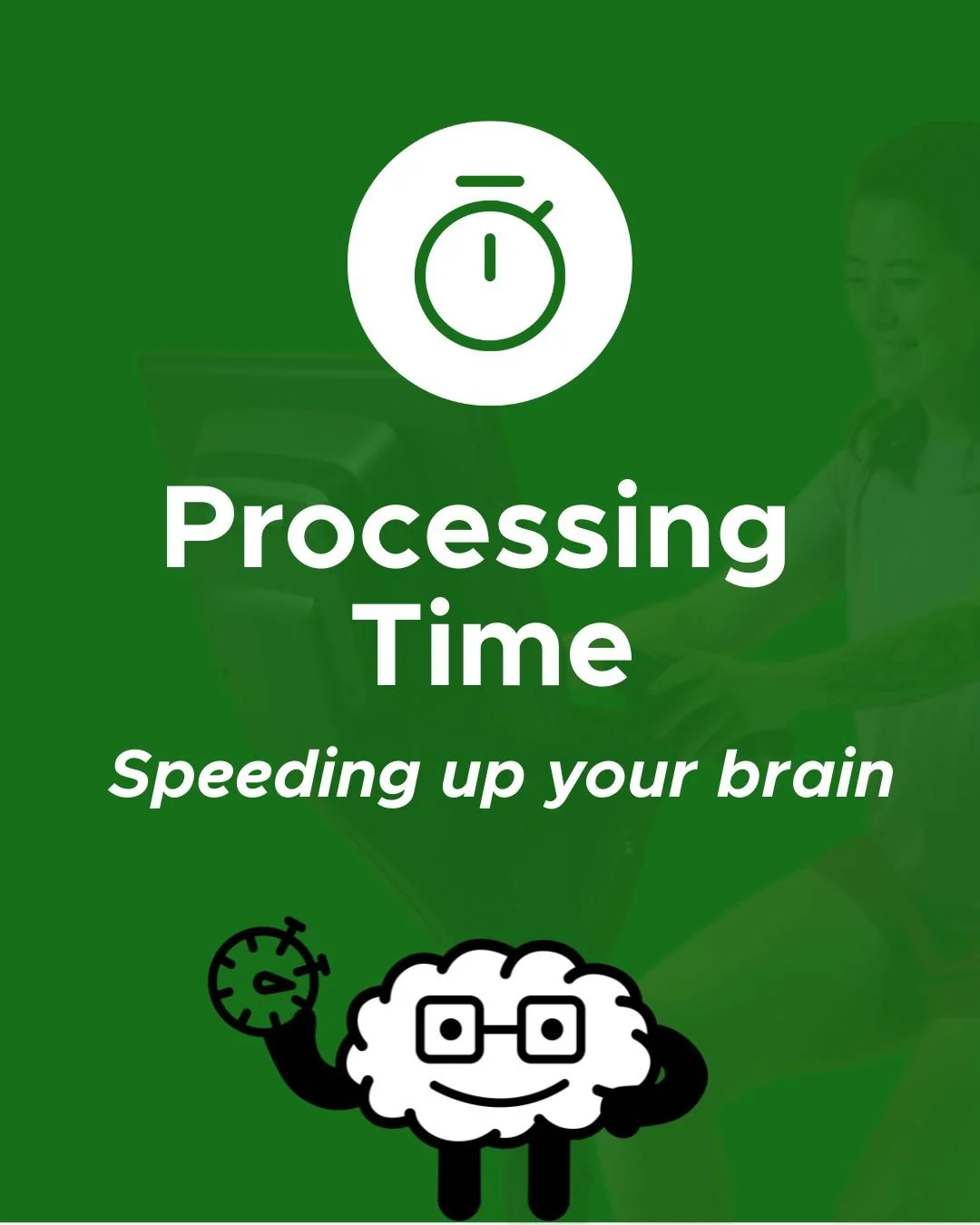Processing Time: Speeding Up Your Brain
Why Processing Time Matters
Why Processing Time Matters
How quickly can you react to a sudden question, dodge an obstacle, or make a split-second decision? That speed comes down to processing time—the brain’s ability to receive information, interpret it, and respond accordingly.
Processing speed tends to slow with age, affecting everything from driving to remembering instructions. Even younger people can struggle, especially under stress or when multitasking. Improving processing time can make life feel smoother, faster, and more efficient.
How Exercise Supports Processing Time
Our racing games requiring pedaling combine physical effort with rapid visual and cognitive demands. As players move, they must quickly process visual cues, such as turns, obstacles, and opponents, and react in real time while maintaining coordination and pace. This dual engagement of body and mind strengthens the brain’s ability to process information quickly and accurately.
Training Processing Time Through Play
With Brain Skills Time Tracking, you can see exactly how much of your workout engaged quick thinking and rapid responses.
Examples:
Games that ask you to quickly respond according to visual or auditory informatio makes you work on your processing time.
Reaction-based games that require immediate responses to changing obstacles.
Time-sensitive decisions where hesitation could cost points or progress.
Fast-paced environments that constantly challenge your reflexes.
Every second spent here strengthens your ability to think and act quickly.
Why It Matters for Different Ages
Students & Athletes: Faster processing improves test-taking speed, game-time decisions, and competitive performance.This helps students in the classroom and on the field. It trains the brain to process information faster, consider multiple inputs, and react quickly. On the field, this means anticipating an opponent’s move. At school, it helps link ideas more efficiently, improving productivity and creativity.
Working Adults: Quick thinking supports decision-making, efficiency, and adaptability in high-pressure jobs.
Older Adults: Improving processing time can support safe driving, reduce fall risk, and improve overall independence.
Putting It Into Practice
Ways to improve processing time with Brain Skills Time Tracking:
Play Fast-Paced Games: Seek out games that keep you constantly on alert.Any racing game such as Smash, Castle Kart, GoBikes with opponents or obstacles is excellent for training processing speed. Players must quickly take in visual information — such as turns, hazards, or rivals’ movements — and produce an accurate, timely reaction.
Check Your Dashboard: Monitor your processing minutes after each ride to ensure regular training.
Mix with Attention: Pair processing time workouts with attention-focused games to improve both speed and accuracy.
The Takeaway
Processing time is about more than quick reflexes—it’s about how effectively your brain processes information to handle the demands of everyday life. With Brain Skills Time Tracking, your workouts can now help you think faster, react quicker, and adapt more easily.

